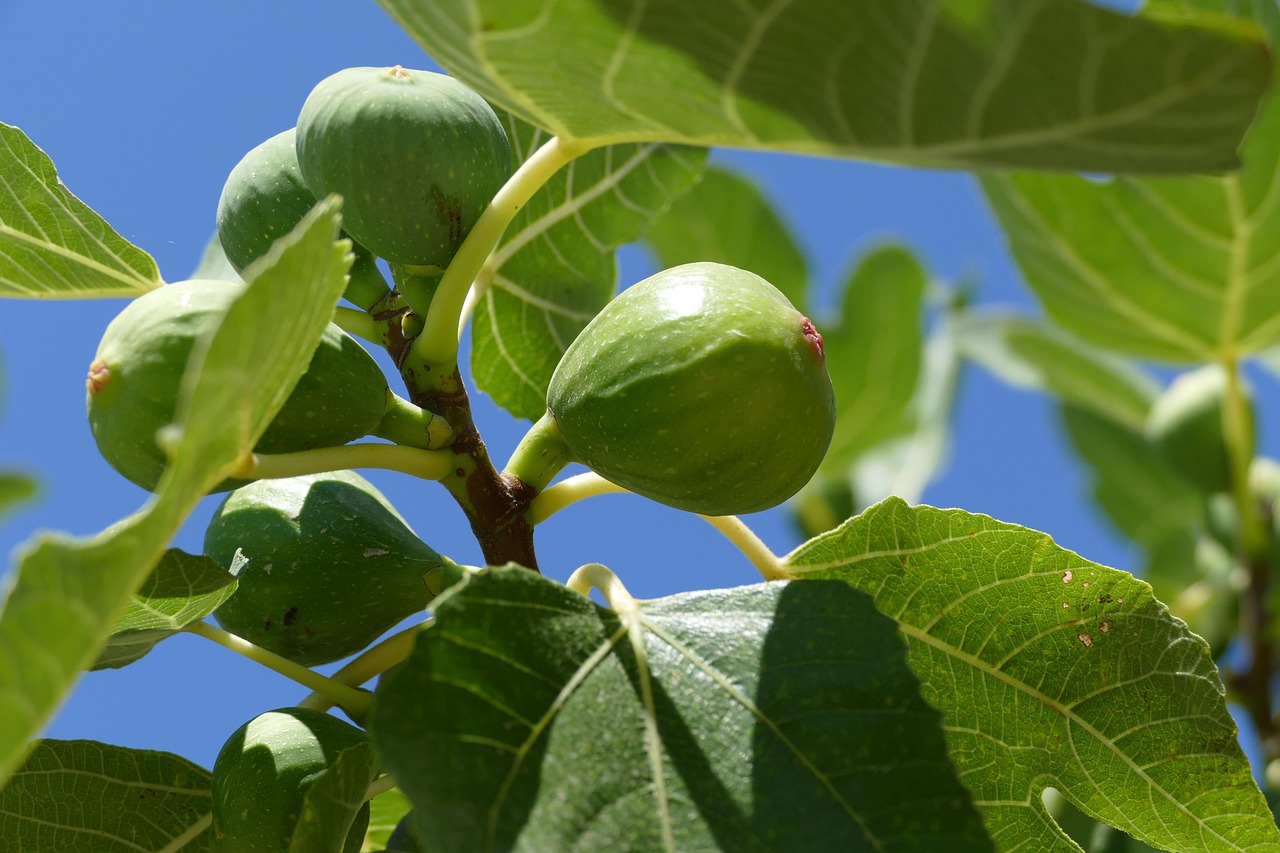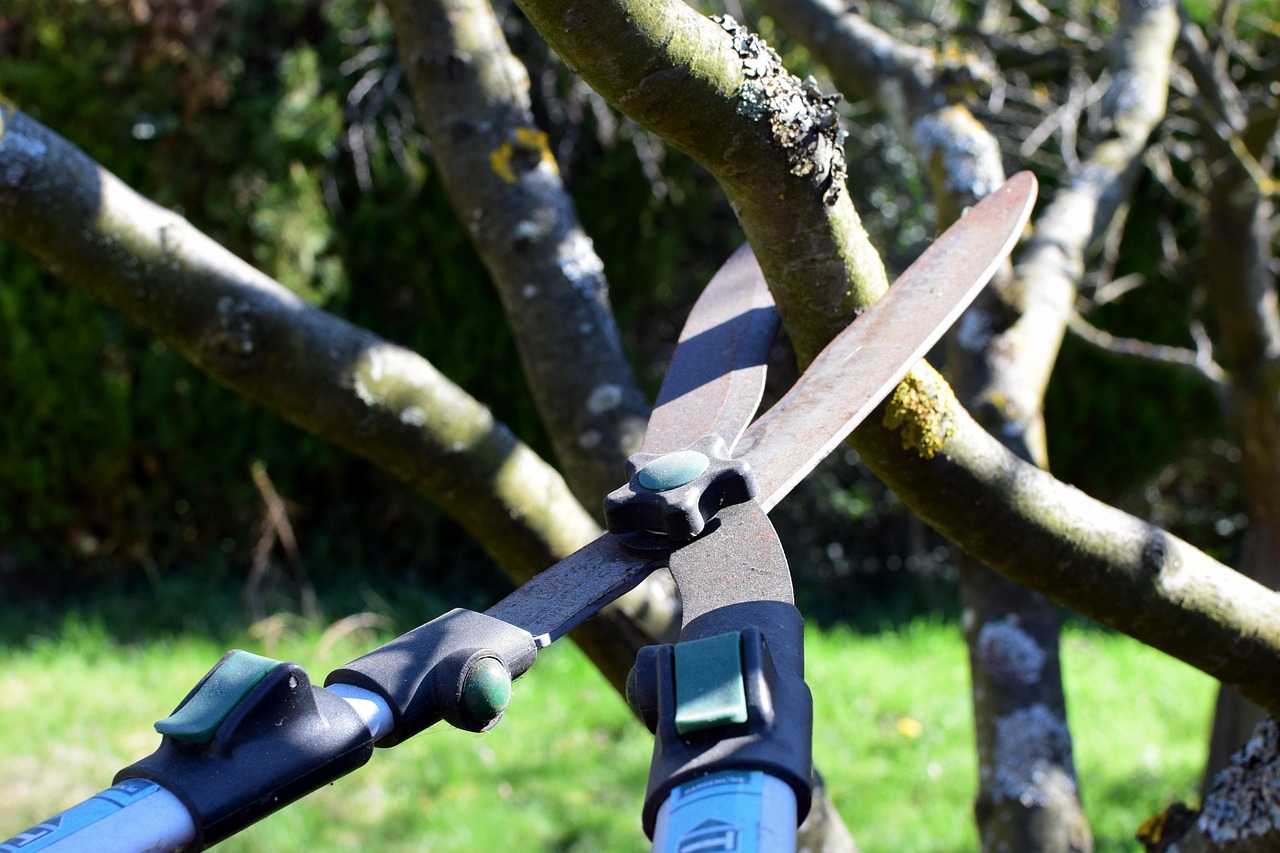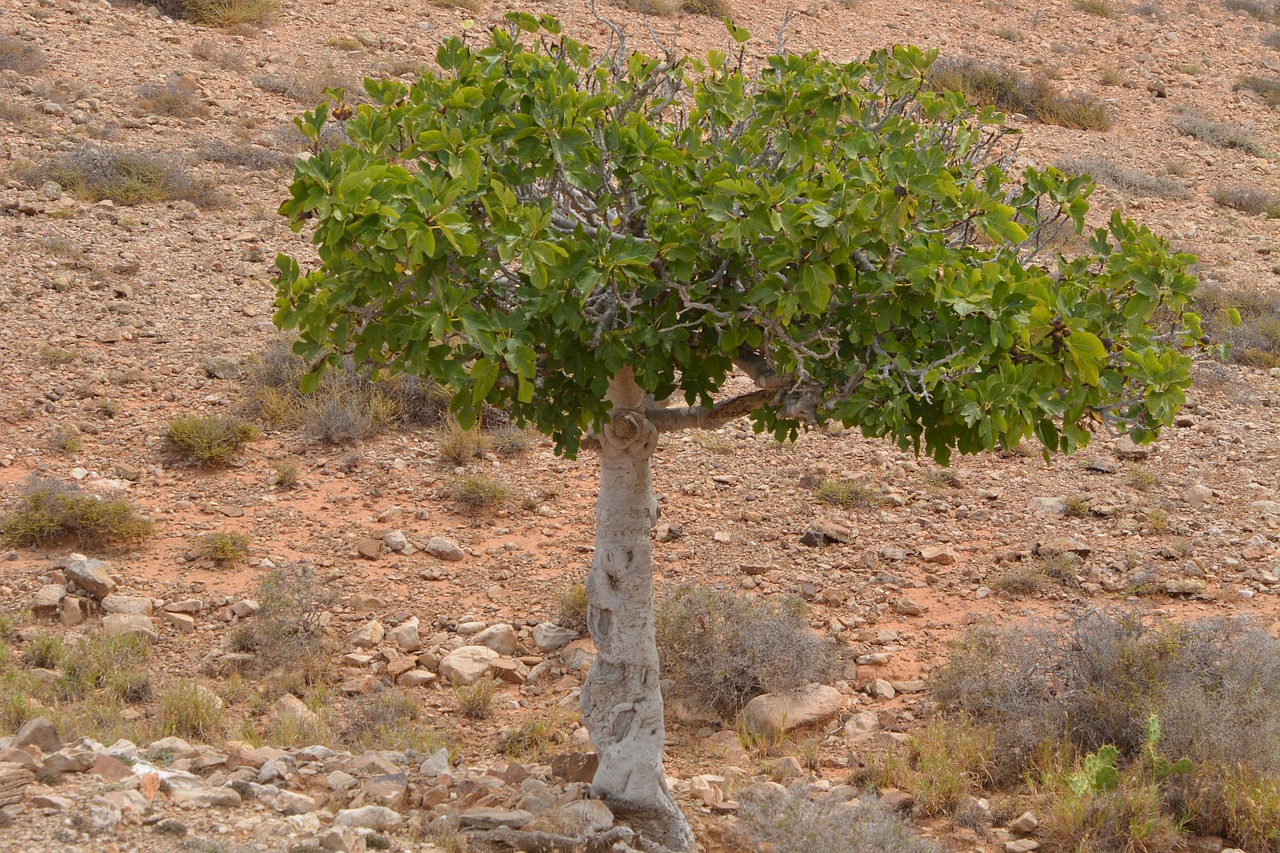Pruning fig trees is essential for optimal fruit development. Proper pruning improves air circulation, encourages healthy growth, and enhances fruit quality. Understanding the best techniques and timing can lead to a bountiful harvest.
Fig trees (Ficus carica) are beloved by many gardeners for their delicious fruits and ornamental beauty. These trees can thrive in various climates but require specific care to produce the best figs. One of the most crucial aspects of fig tree care is pruning. Pruning helps shape the tree, promotes strong growth, and ultimately enhances fruit production.

When it comes to fig tree pruning, timing is everything. The best time to prune a fig tree is during its dormant period, typically in late winter or early spring. This allows the tree to heal quickly and focus its energy on producing new growth and fruit. In warmer climates, some light pruning can also be done in the summer after the fruit has set.
Why Prune Fig Trees?
Pruning serves several important purposes for fig trees. Understanding these reasons can help gardeners make informed decisions about their pruning practices. Here are some key benefits of pruning:
- Improves Air Circulation: Pruning opens up the canopy, allowing air to flow freely through the branches. This helps reduce the risk of fungal diseases.
- Enhances Light Penetration: A well-pruned tree allows sunlight to reach more leaves, which is essential for photosynthesis and fruit development.
- Encourages Healthy Growth: Removing dead or diseased branches ensures that energy is directed towards healthy parts of the tree.
- Shapes the Tree: Pruning helps maintain a manageable size and shape, making harvesting easier and improving aesthetics.
- Increases Fruit Quality: Proper pruning can lead to larger, tastier figs by directing nutrients to fewer, but stronger fruits.
The fig tree typically produces fruit on new wood, so knowing how to prune effectively can greatly influence your harvest. It is also important to note that fig trees can be vigorous growers. Without regular pruning, they can become overgrown and less productive over time.

Types of Pruning Techniques
There are several techniques that gardeners can use when pruning fig trees. Each method serves a specific purpose and can be combined depending on the tree’s needs. Here are some common techniques:
- Thinning: This involves removing entire branches to open up the canopy. It helps improve air circulation and light exposure.
- Heading Back: This technique involves cutting back a portion of a branch to encourage new growth. It helps control size and stimulates branching.
- Pinching: Pinching involves removing the tips of young shoots to encourage bushier growth. This technique is usually performed in early spring.
- Cleaning: This refers to removing any dead, damaged, or diseased wood from the tree. It is crucial for maintaining the overall health of the fig tree.
When applying these techniques, it is important to use sharp, clean tools to make clean cuts. This minimizes damage to the tree and reduces the risk of disease. Always remember to disinfect your tools between cuts, especially if you encounter diseased wood.
Understanding Fig Tree Growth Patterns
Fig trees have unique growth patterns that impact how they should be pruned. Understanding these patterns can help gardeners make more effective pruning decisions. Typically, fig trees grow in a way that produces fruit on one-year-old wood. Therefore, knowing which branches are one-year-old is crucial for successful pruning.

The following table outlines the growth stages of fig trees and corresponding pruning recommendations:
| Age of Wood | Description | Pruning Recommendation |
|---|---|---|
| New Growth (0-1 Year) | This wood is still developing and will bear fruit in the following year. | Avoid heavy pruning; thin as necessary. |
| One-Year-Old Wood | This wood produces fruit in the current growing season. | Prune lightly to encourage more lateral branching. |
| Older Wood (2+ Years) | This wood may become unproductive over time. | Consider removing older branches to rejuvenate growth. |
By understanding these growth patterns and applying appropriate pruning techniques, gardeners can significantly improve their fig tree’s productivity and health. Regular maintenance not only leads to better fruiting but also creates a more visually appealing tree in your garden.
Timing Your Pruning
Knowing when to prune your fig tree is as crucial as how to prune it. The timing can significantly affect both the tree’s health and its fruit yield. This section discusses the optimal times for pruning fig trees and the reasons behind these timings.

The ideal time to prune fig trees is during their dormant phase, which usually occurs in late winter or early spring. Pruning at this time helps the tree recover quickly and encourages vigorous growth once the growing season begins. Here are some key points to consider:
- Late Winter to Early Spring: This is generally the best time for major pruning. The tree is still dormant, making it less susceptible to stress.
- Summer Pruning: Light pruning can be done in the summer after the figs have set. This helps control growth and can improve fruit size.
- Avoid Fall Pruning: Pruning in the fall can stimulate new growth that will not have time to harden off before winter, leading to potential damage.
In addition to seasonal timing, local climate conditions may influence when you should prune. For example, warmer regions may have a longer growing season, allowing for more flexibility in pruning schedules. Always consider your specific environment when planning your pruning activities.
Tools for Pruning Fig Trees
Using the right tools is essential for effective pruning. Proper tools not only make the process easier but also ensure clean cuts, which are vital for the health of the tree. Here are some recommended tools for pruning fig trees:
- Hand Pruners: These are ideal for cutting small branches and stems. Look for a pair with sharp, curved blades.
- Loppers: For thicker branches, loppers provide added leverage. They can easily cut branches that are up to two inches in diameter.
- Pruning Saw: A pruning saw is useful for larger branches that cannot be cut with hand pruners or loppers.
- Gloves: Protect your hands from cuts and scratches while handling branches.
- Loppers or Pole Pruners: For higher branches, consider using a pole pruner to reach those areas safely.
Before starting your pruning task, make sure all tools are clean and sharp. Disinfecting your tools with rubbing alcohol can help prevent the spread of diseases between plants.
Common Mistakes to Avoid
While pruning is beneficial for fig trees, certain mistakes can hinder their growth and productivity. Being aware of these common pitfalls can help ensure successful pruning sessions. Here are some mistakes to avoid:
- Over-Pruning: Removing too many branches can stress the tree and reduce fruit production. Aim for a balanced approach.
- Neglecting Cleaning: Failing to remove dead or diseased wood can lead to infestations and disease spread.
- Poor Timing: Pruning at the wrong time, especially in fall, can result in damage from winter weather.
- Ignoring Tree Shape: Not considering the natural shape of the tree can result in an unbalanced appearance and poor fruiting.
- Using Dull Tools: Dull tools can crush branches instead of cutting them cleanly, leading to potential infections.
By avoiding these mistakes, gardeners can enhance the overall health and productivity of their fig trees, leading to a more fruitful harvest.
Aftercare Following Pruning
After pruning, it is essential to care for your fig tree properly to ensure it thrives. The right aftercare can support healing and promote new growth. Here are some aftercare tips:
- Watering: Ensure your fig tree receives adequate water after pruning. This helps reduce stress and supports new growth.
- Fertilization: Apply a balanced fertilizer about a month after pruning, as this will provide essential nutrients needed for new growth.
- Pest Control: Keep an eye out for pests or diseases that may target recently pruned trees. Early detection is key.
- Mulching: Adding a layer of mulch around the base of the tree helps retain moisture and suppress weeds.
Caring for your fig tree after pruning is crucial for its recovery and future productivity. By following these guidelines, you can help ensure your tree remains healthy and fruitful throughout the growing season.
Specific Varieties and Their Pruning Needs
Not all fig varieties require the same pruning techniques. Understanding the specific needs of different varieties can lead to better results. Some common varieties include:
- Brown Turkey: This variety benefits from moderate pruning to maintain shape and encourage fruit production on new growth.
- Smyrna: Requires more careful management as it needs specific conditions for pollination; pruning should focus on removing old wood.
- Cadmium: This variety often benefits from light annual pruning to maintain size without sacrificing fruit yield.
- Kadota: Prune lightly, focusing on thinning out crowded areas to improve airflow.
By tailoring your pruning practices based on the specific variety of fig tree you are growing, you can optimize fruit development and overall tree health.
Pest and Disease Management Post-Pruning
After pruning your fig tree, it is essential to monitor for pests and diseases. Pruning can expose the tree to vulnerabilities, making vigilance critical. Understanding how to manage potential threats helps ensure a healthy harvest.
Common pests that affect fig trees include:
- Fig Beetles: These pests can damage fruit and foliage. They are often more active during the warm months.
- Scale Insects: These small, sap-sucking insects can weaken trees. They often appear as bumps on branches.
- Aphids: These tiny insects can cluster on new growth, causing leaves to curl and become distorted.
- Spider Mites: These pests thrive in dry conditions and can lead to leaf discoloration and drop.
To effectively manage these pests, consider the following strategies:
- Regular Inspection: Check your tree frequently for signs of pest activity. Early detection is crucial for effective management.
- Natural Predators: Encourage beneficial insects like ladybugs and lacewings that prey on harmful pests.
- Insecticidal Soap: Use insecticidal soap or neem oil as a natural remedy to control soft-bodied insects.
- Hygiene Practices: Clean up fallen fruits and debris around the tree to reduce pest habitats.
Disease Prevention Strategies
Fig trees can also be susceptible to several diseases. Some common diseases include:
- Leaf Spot: This fungal disease causes dark spots on leaves, leading to premature leaf drop.
- Root Rot: Caused by overwatering or poorly draining soil, this disease can lead to tree decline.
- Fusarium Wilt: This soil-borne disease affects the vascular system of the tree, leading to wilting and yellowing leaves.
Implementing disease prevention strategies helps maintain your fig tree’s health. Here are some effective methods:
- Proper Watering: Ensure that you water your fig tree appropriately. Overwatering can lead to root rot, while underwatering can stress the tree.
- Good Air Circulation: Prune for good airflow among branches. This helps reduce humidity levels that favor fungal growth.
- Use Disease-Resistant Varieties: When selecting new fig trees, consider choosing varieties known for their disease resistance.
- Fungicide Application: If necessary, apply fungicides at the first sign of disease, following the recommended guidelines.
The Role of Fertilization in Fig Tree Health
Fertilization plays a crucial role in supporting fig tree growth and fruit production. After pruning, providing adequate nutrients is essential for recovery and vigor. Here are some key points regarding fertilization:
The best type of fertilizer for fig trees is a balanced one, such as a 10-10-10 NPK formulation. This ensures that the tree receives equal parts nitrogen, phosphorus, and potassium. Here are some considerations when fertilizing:
- Timing: Fertilize in early spring just before new growth begins. This timing aligns nutrient availability with the tree’s active growth phase.
- Application Rate: Follow the manufacturer’s instructions for application rates based on the size of the tree. Over-fertilization can harm the tree.
- Organic Options: Consider using organic fertilizers like compost or well-rotted manure to improve soil structure and provide slow-release nutrients.
A soil test can also help determine nutrient deficiencies, allowing for more targeted fertilization strategies. Regular testing will help you understand your soil’s needs better and adjust your fertilization practices accordingly.
Irrigation Needs for Healthy Fig Trees
Irrigation is another critical aspect of fig tree care. Adequate watering supports healthy growth and fruit development, especially after pruning. Here are some recommendations for watering fig trees:
- Soil Moisture Monitoring: Check the soil moisture regularly. Fig trees prefer well-drained soil and should not be overwatered.
- Irrigation Frequency: Water deeply but infrequently. A good rule of thumb is to water once a week during dry spells, adjusting frequency based on rainfall and temperature.
- Drip Irrigation Systems: Consider installing a drip irrigation system to ensure consistent moisture without overwatering.
Proper irrigation techniques will help maintain healthy trees that produce high-quality fruit. Monitoring soil conditions is essential to prevent both drought stress and waterlogged roots.
Harvesting Figs for Optimal Quality
The final step in ensuring optimal fruit development is harvesting figs at the right time. Harvesting too early or too late can affect flavor and texture. Here are some tips for harvesting figs:
- Timing: Figs are usually ready for harvest when they are fully colored and slightly soft to the touch. This typically occurs in late summer to early fall, depending on the variety.
- Careful Handling: Be gentle when harvesting figs, as they bruise easily. Use scissors or pruners to cut the stem instead of pulling the fruit off.
- Storage: Fresh figs have a short shelf life. Store them in the refrigerator for a few days but consume them as soon as possible for the best flavor.
By understanding when and how to harvest figs, you can maximize their flavor and enjoy the fruits of your labor throughout the growing season.
Additional Tips for Fig Tree Care
To further enhance the success of your fig tree, consider integrating additional care practices. These can support both the health of the tree and the quality of its fruit. Here are some helpful tips:
- Mulching: Adding a layer of organic mulch around the base of your fig tree helps retain moisture, suppress weeds, and improve soil quality as it breaks down over time.
- Supporting Growth: For young trees or those with a heavy fruit load, consider using stakes to support branches and prevent breakage.
- Companion Planting: Consider planting companion plants that can deter pests or enhance the soil quality around your fig tree. Herbs like basil or marigolds can be beneficial.
- Regular Monitoring: Keep an eye on your tree throughout the growing season. Regular checks can help you catch any issues with pests or diseases early.
- Seasonal Adjustments: Adjust your pruning and care techniques based on seasonal changes. Understanding how weather impacts growth can lead to better outcomes.
Investing time in these additional practices can further boost the growth and fruiting potential of your fig tree, leading to a more fruitful harvest.
Common Questions About Fig Tree Pruning
Many gardeners have questions regarding fig tree pruning and care. Addressing these common inquiries can help clarify practices and expectations:
- How often should I prune my fig tree? Generally, annual pruning is sufficient for most varieties. However, if you notice excessive growth or overcrowding, additional light pruning may be beneficial.
- Can I prune my fig tree in the summer? Yes, light summer pruning can be done to remove excess foliage or damaged branches after the fruit has set.
- What should I do if my fig tree isn’t producing fruit? Assess factors such as pruning practices, watering, fertilization, and overall tree health. Sometimes, adjusting care practices can lead to improved fruit production.
- Is it necessary to use pruning sealants? Generally, it is not necessary to use sealants on cuts made during pruning. Healthy trees can heal naturally. However, in cases of severe wounds or disease-prone varieties, sealants may be used as a precaution.
- Why are my figs falling off before ripening? This could be due to various factors, including stress from inadequate water, pests, or nutrient deficiencies. Analyzing your care routine may help identify the cause.
Final Thoughts
Caring for fig trees through proper pruning and maintenance practices is crucial for achieving optimal fruit development. By understanding the specific needs of your fig variety and implementing effective pruning techniques, you can enhance both the health of your tree and the quality of its fruits. Regular monitoring for pests and diseases, along with appropriate watering and fertilization strategies, will further support your fig tree’s growth.
Remember that successful gardening involves patience and observation. Each season will bring new challenges and opportunities for learning. Embrace the process and enjoy the rewards of your hard work. With dedication and care, your fig tree can become a thriving centerpiece in your garden, providing delicious fruits for you and your family to enjoy for years to come.
As you embark on your fig-growing journey, keep these principles in mind. With each pruning session and harvesting period, you will gain valuable experience that will contribute to your success in growing these delightful trees. Happy gardening!
